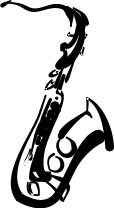
Links are being added to this page, daily. Please come back soon.

Exercises
The following exercises are
designed for various purposes. They cover scales, articulation and
technique as basic patterns which repeat. The key to productive
practicing is to:
1) Identify, 2) Diagnose, 3) Isolate and 4) Apply. If a problem is
approached in this way, it will be conquered.

Always Think
About:
- Producing the best
tone quality that you can
- Playing with a relaxed
embouchure "Ooo" formation
- Intonation, paying
attention to the "trouble notes" and correcting before they
go out of tune
- Breathing correctly
using diaphragmatic support...MOST
IMPORTANT STEP!!
- Even, exact, relaxed
technique with a metronome
- Using the correct
articulation for the exercise.
- Playing with a good
FOCUSED
sound/ air stream
Remembering these points
will make your exercises highly focused and
productive.

Scales:
In both the PDF
and GIF formats
Exercise
#1 PDF = All Major Modes
or
Exercise #1 GIF
Exercise #2
PDF = All Harmonic Minor Modes
or Exercise
#2 GIF
Exercise #3
PDF = Major Arpeggios or
Exercise
#3 GIF
Exercise #4
PDF = Minor Arpeggios or
Exercise
#4 GIF
Exercise #5
PDF = Dominant Arpeggios or
Exercise
#5 GIF
Exercise #6
PDF = Diminished Arpeggios or
Exercise
#6 GIF
*Use the method book
"Les Gammes", by Jean-Marie Londeix to cover scales in
3rds and 4ths. All majors should do the 3rds. Performance
majors MUST do the 4ths too.

Tonguing:
In both the PDF
and GIF formats
Exercise #1 PDF = Legato
or Exercise #1 GIF
Exercise #2 PDF = Staccato or Exercise #2 GIF
Exercise #3 PDF = Staccatissimo or Exercise #3 GIF
Exercise #4 PDF = Integration of all articulation or
Exercise #4 GIF

Technique:
In both the PDF
and GIF formats
Exercise
#1 PDF = Palm
Key Focus or Exercise
#1 GIF
Exercise #2 PDF = Paddle Key Focus or Exercise #2 GIF
Exercise #3 PDF = Three note groupings or Exercise #3
GIF
